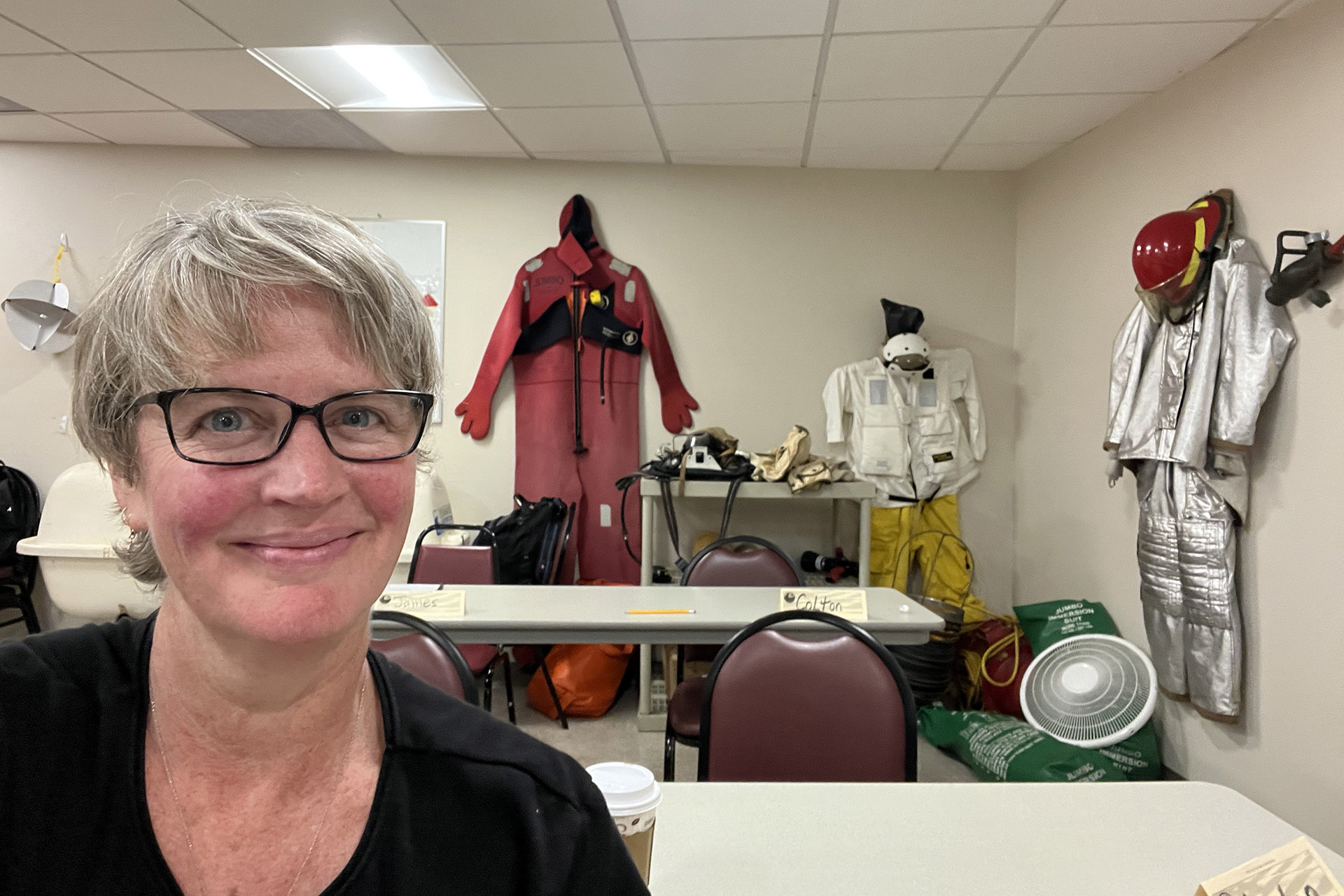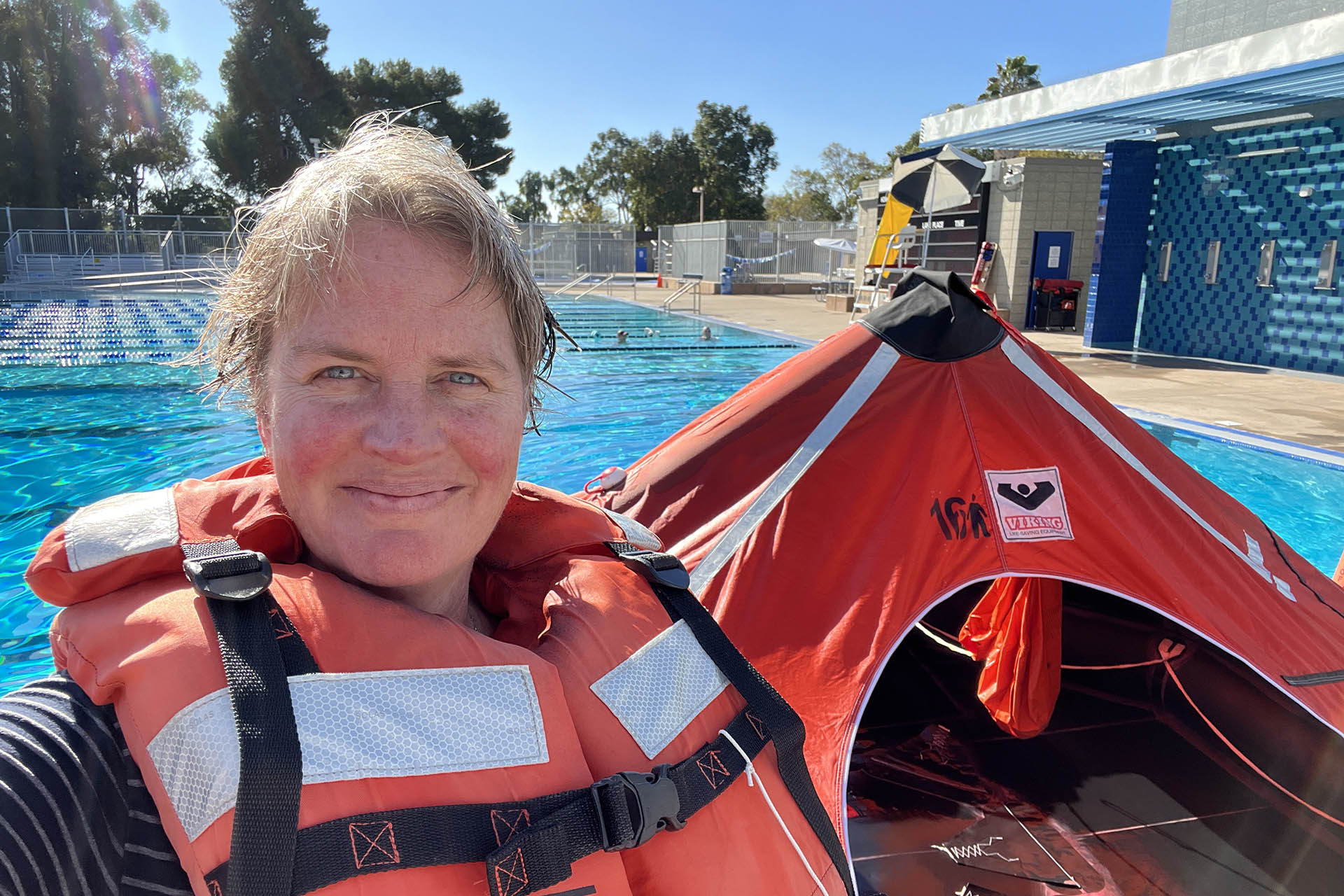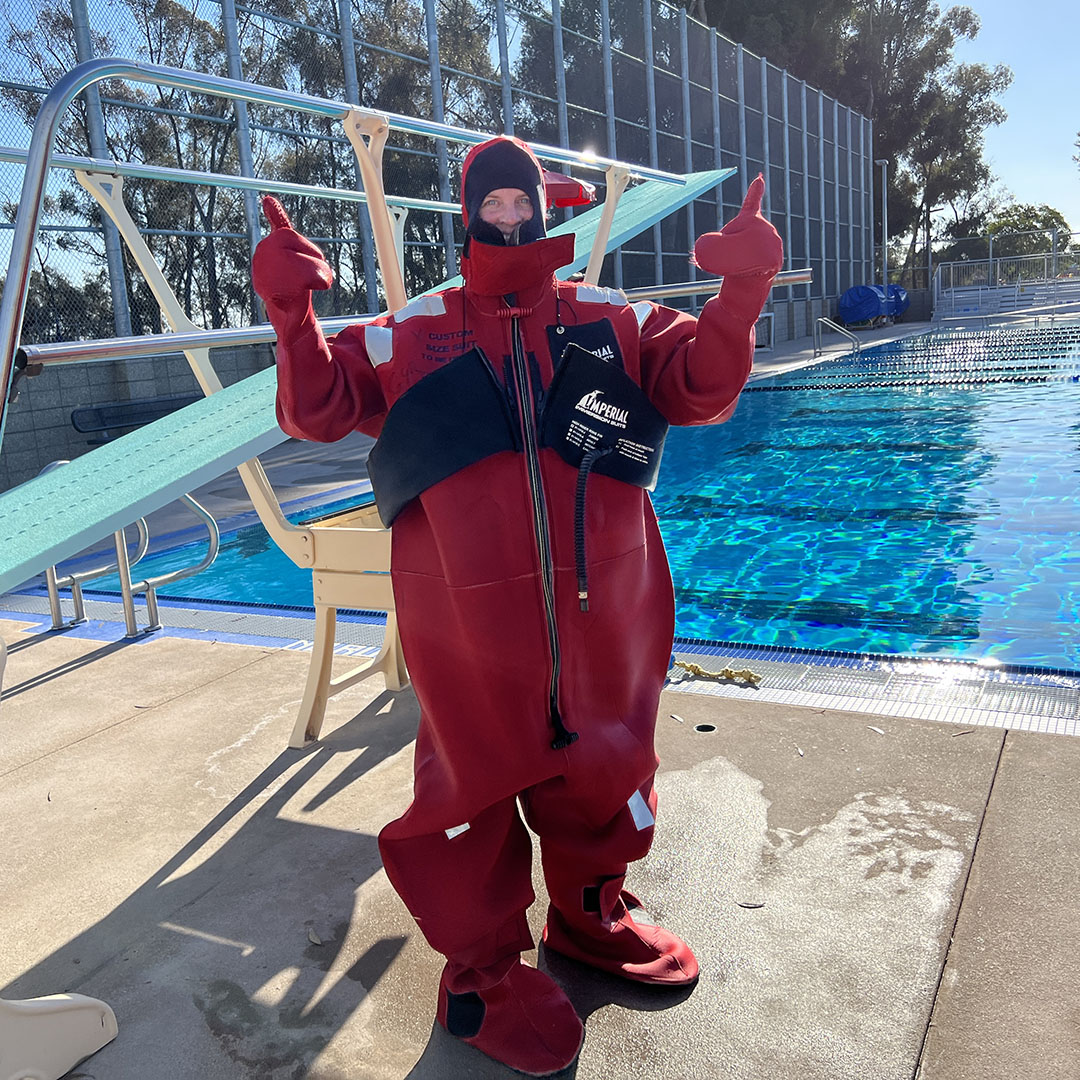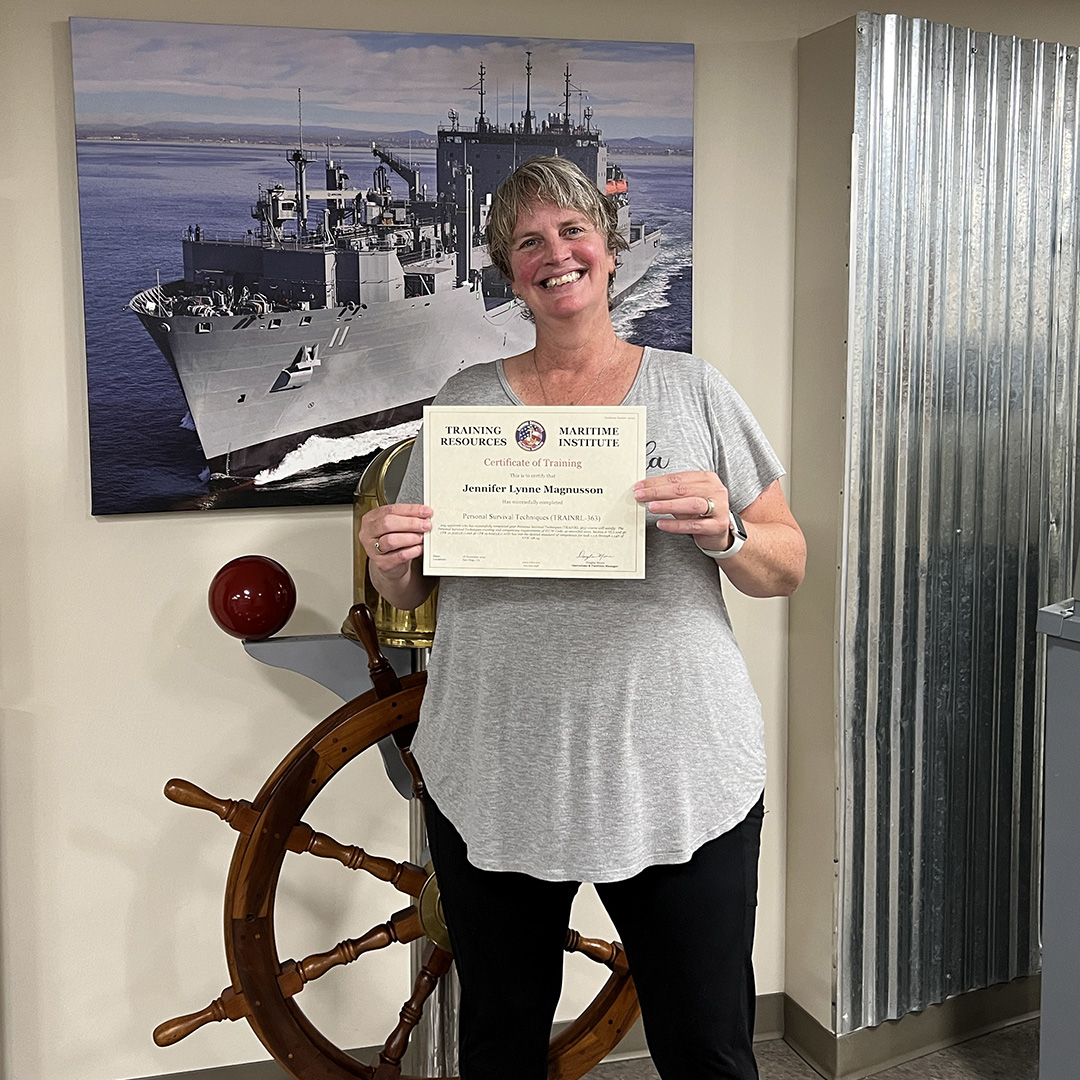We’re all in this together
Required Learning for Everyone
As part of the International Convention on Standards of Training, Certification and Watchkeeping for Seafarers (STCW), everyone who will be onboard ARAON, even those of us just there for research, are required to complete an STCW-approved Personal Survival Techniques course, which is just one part of longer Basic Safety Training Course. The complete course consists of firefighting, lifesaving, survival, and rescue exercises…everything you need to make sure that you can do your part in a marine emergency.
The Personal Survival Techniques course covers the main types of maritime emergencies, introduces all of the different survival equipment used in an emergency, discusses the principles of survival at sea, and offers practical experience in how to abandon ship, survive in the water, and use survival craft during a maritime emergency. So what does that mean exactly?

The classroom at Training Resources was well stocked with sample suits and equiment that we could handle and explore.
Practically Speaking
I took the course at Training Resources Maritime Institute in sunny San Diego. We spent a day in the classroom learning all about the different procedures, equipment and tools needed to keep the crew safe in case of a maritime emergency. Things like fires, adverse weather, collisions, etc. can be extremely dangerous when you’re far from shore or in freezing or sweltering temperatures. Each person on board needs to know where to go and what their job is during different emergency situations, what gear they may need to bring with them, and how to increase their chance of survival.
The practical component of the course was fun but exhausting! We had to demonstrate our ability to tread water and to jump into the water and swim wearing a Type I (Offshore) Personal Floatation Device. We then had to put on a bulky immersion suit in less than 2 minutes and then safely jump in and swim. Once in the water, we had to work as a team to get into several lifesaving formations for different purposes…moving through rough water, signaling a passing aircraft, conserving heat, or assisting an injured crewmate. Our final task was to flip over a 16-person liferaft and then climb in from the water. As a person with no upper body strength, this was a very daunting task and several times I thought that I wouldn’t be able to complete it, but with the encouragement and support of my awesome instructor and a deep dig for endurance and perseverance on my side, I was able to finish the task and pass the course!

The practical portion of the course was done in a local outdoor pool. The weather was beautiful, even for November!

The immersion suit I ended up with was a JUMBO…it was way too big but I got it on and was able to complete all of my tasks successfully.

I am now certified in Personal Survival Techniques and ready for my Antarctic adventures!
With this milestone beyond me, I am ready to continue with the final preparations for my expedition!
